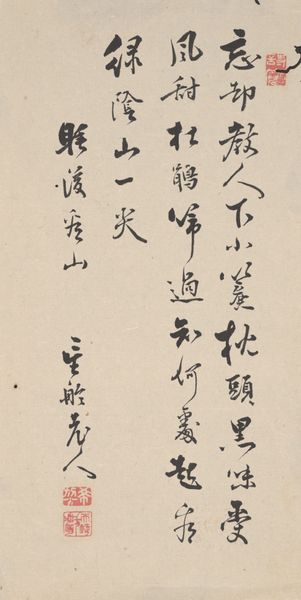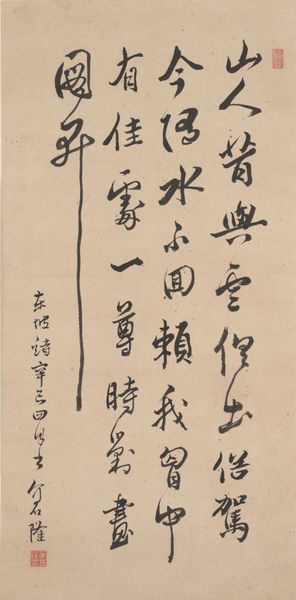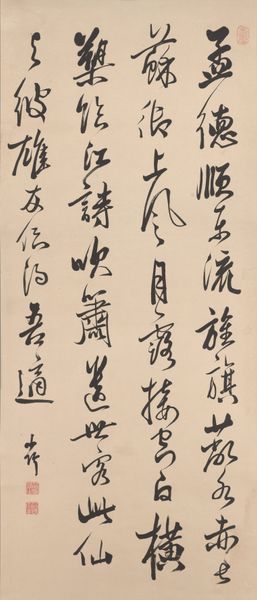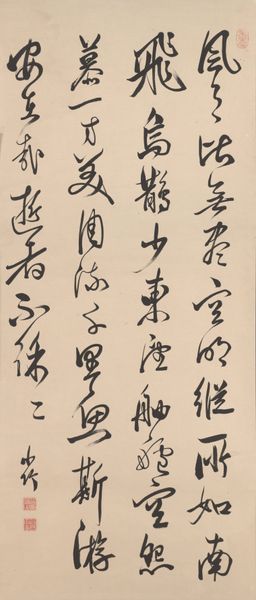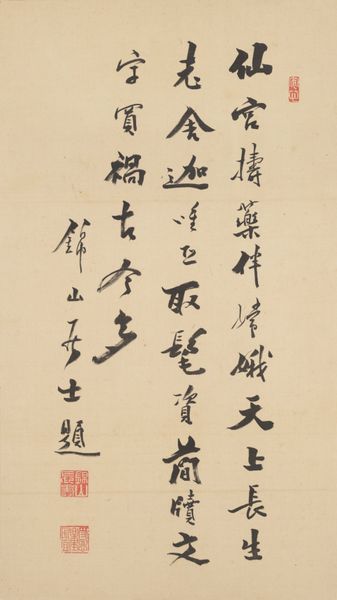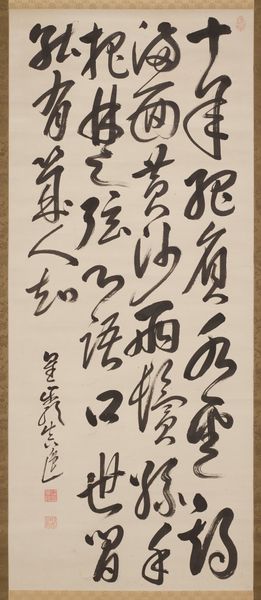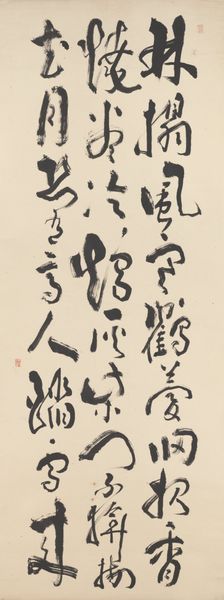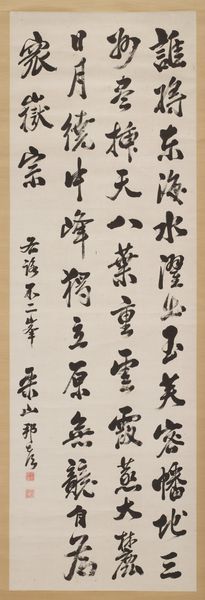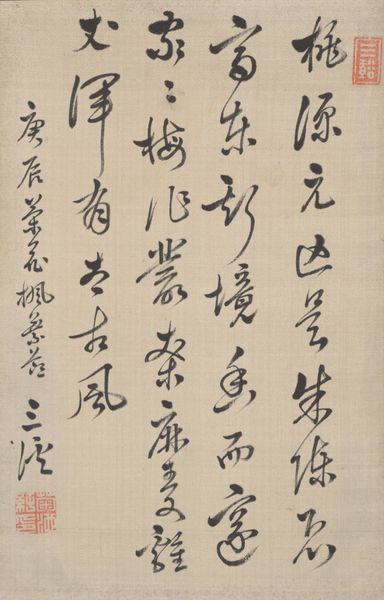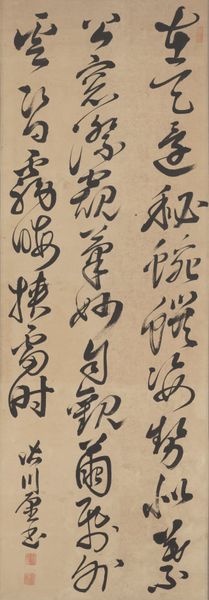
drawing, paper, ink-on-paper, hanging-scroll, ink
#
drawing
#
hand-lettering
#
asian-art
#
hand drawn type
#
hand lettering
#
japan
#
paper
#
ink-on-paper
#
personal sketchbook
#
hanging-scroll
#
ink
#
hand-drawn typeface
#
fading type
#
calligraphic
#
sketchbook drawing
#
sketchbook art
#
calligraphy
#
small lettering
Dimensions: 53 1/4 × 17 3/4 in. (135.26 × 45.09 cm) (image)75 7/16 × 23 5/16 in. (191.61 × 59.21 cm) (mount, without roller)
Copyright: Public Domain
Curator: Here we have "Mists off the Lake," a hanging scroll drawing from the late 18th to early 19th century by Tachihara Suiken, rendered in ink on paper. Editor: Immediately, I'm struck by its sparseness and movement—like watching wind through bamboo. The verticality really emphasizes that. Curator: Yes, there's a clear connection to the natural world. What is particularly interesting is how the hand-lettering style gives it such fluidity, nearly transforming text into landscape. Editor: You can almost feel the ink bleeding into the paper, can’t you? I’m curious about the materiality itself: the sourcing of the paper, the specific ink recipe—probably prepared from soot—and how the artist manipulated them. These scrolls were commodities too, not just spiritual outpourings. Curator: Absolutely. Consider the craft involved; preparing the materials was a slow art. As for the artistry, imagine the brushstrokes forming those characters like fleeting mists, each one holding an intention, a whisper. What do you think the poem is communicating here? Editor: Hard to say without a full translation, but something about bamboo, certainly. The rhythmic, repeated strokes suggest both careful labor and perhaps a social critique inherent in the commissioned object. Was the artist also challenging established artistic and class lines? Curator: Perhaps both. He was working within a tradition, but, in the intimacy of a sketch like this, maybe bending some rules, too. His unique brushwork feels so free and individual. You can tell the artist had his own hand-mixed ink. It gives character. Editor: Exactly—the point is in this tension. So, considering the broader political and economic contexts, appreciating its significance involves seeing beyond pure aesthetics. This type of work raises so many questions, starting with what work exactly produced the scene itself? Curator: It is definitely about the artist, labor and medium combined. Mists or strokes fading across the surface are all there simultaneously. It makes you reflect on impermanence. Editor: Agreed. Seeing this hanging scroll definitely underscores my belief that analyzing materials helps us to really get inside what could have possibly moved the artist.
Comments
No comments
Be the first to comment and join the conversation on the ultimate creative platform.
